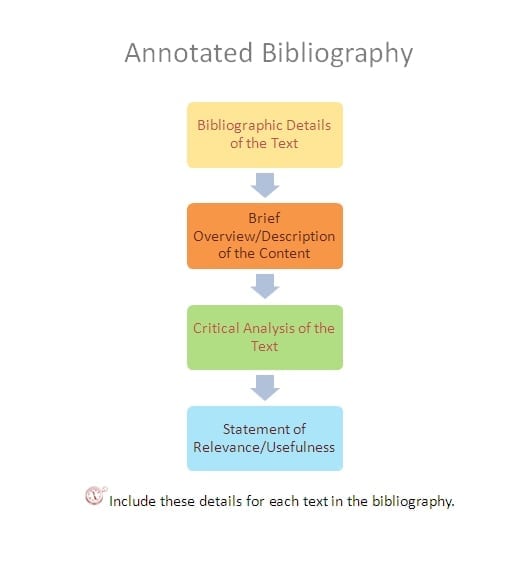Add the volume, issue, and page numbers for periodicals. Following the publication name, include the volume number, then the issue number in parentheses, and then the page numbers of the section you referenced in your essay. Make sure that you italicize the volume number, but not the issue number or page numbers.
A bibliography is a list of books, scholarly articles, speeches, private records, diaries, interviews, laws, letters, websites, and other sources you use when researching a topic and writing a paper. The bibliography appears at the end.
The main purpose of a bibliography entry is to give credit to authors whose work you've consulted in your research. It also makes it easy for a reader to find out more about your topic by delving into the research that you used to write your paper. In the academic world, papers aren't written in a vacuum; academic journals are the way new research on a topic circulates and previous work is built upon.
Bibliography entries must be written in a very specific format, but that format will depend on the particular style of writing you follow. Your teacher or publisher will tell you which style to use, and for most academic papers it will be either MLA, American Psychological Association (APA), Chicago (author-date citations or footnotes/endnotes format), or Turabian style.
- A bibliography, by definition, is a detailed listing of the books, journals, magazines, or online sources that an author has used in researching and writing their work. It is important to note that it must be a complete list including every source used during the research phase.
- Bibliography, also known as works cited, reference list is basically an orderly study and referencing of books and source materials used in academic research. It might or might not include any information on the literary analysis or criticism of the materials cited.
- How to create a Harvard bibliography or reference list. Published on 1 May 2020 by Jack Caulfield. Revised on 22 June 2020. In Harvard style, the bibliography or reference list provides full references for the sources you used in your writing. A reference list consists of entries corresponding to your in-text citations.
The bibliography is sometimes also called the references, works cited, or works consulted page.
Components of a Bibliography Entry
Bibliography entries will compile:
- Authors and/or editors (and translator, if applicable)
- Title of your source (as well as edition, volume, and the book title if your source is a chapter or article in a multi-author book with an editor)
- Publication information (the city, state, name of the publisher, date published, page numbers consulted, and URL or DOI, if applicable)
- Access date, in the case of online sources (check with the style guide at the beginning of your research as to whether you need to track this information)
Order and Formatting



Your entries should be listed in alphabetical order by the last name of the first author. If you are using two publications that are written by the same author, the order and format will depend on the style guide.
In MLA, Chicago, and Turabian style, you should list the duplicate-author entries in alphabetical order according to the title of the work. The author's name is written as normal for his or her first entry, but for the second entry, you will replace the author's name with three long dashes.
In APA style, you list the duplicate-author entries in chronological order of publication, placing the earliest first. The name of the author is used for all entries.
For works with more than one author, styles vary as to whether you invert the name of any authors after the first. Whether you use title casing or sentence-style casing on titles of sources, and whether you separate elements with commas or periods also varies among different style guides. Consult the guide's manual for more detailed information.
Bibliography entries are usually formatted using a hanging indent. This means that the first line of each citation is not indented, but subsequent lines of each citation are indented. Check with your instructor or publication to see if this format is required, and look up information in your word processor's help program if you do not know how to create a hanging indent with it.
Bib Citation
Chicago's Bibliography vs. Reference System
Bibliography Maker
Chicago has two different ways of citing works consulted: using a bibliography or a references page. Use of a bibliography or a references page depends on whether you're using author-date parenthetical citations in the paper or footnotes/endnotes. If you're using parenthetical citations, then you'll follow the references page formatting. If you're using footnotes or endnotes, you'll use a bibliography. The difference in the formatting of entries between the two systems is the location of the date of the cited publication. In a bibliography, it goes at the end of an entry. In a references list in the author-date style, it goes right after the author's name, similar to APA style.
